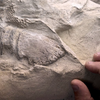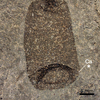Lyndon Johnson: Architect of the U.S. Space Program

Former President Lyndon Johnson and Vice President Spiro Agnew watching Apollo 11 liftoff
Post Author - Ellis Nolan
The Space Race is an era etched in the mythos of the United States. The starting gun, fired October 4th, 1957, as the Soviet Union launched the first-ever artificial satellite into space, was quickly answered by President John F. Kennedy a month later. In a special session of Congress, he set forth the goal of landing a man on the moon before the decade was out. If Kennedy was Jason on this voyage to the stars, Vice President Lyndon B. Johnson was his Argus, constructing the means of transport long before this challenge was issued and long before his superior’s assassination tumbled the nation into darkness.
The origins of Johnson’s role in the space program date back to the launch of the Soviet satellite in 1957, when Johnson was serving as Senate Majority Leader under President Dwight D. Eisenhower. In response to the launch, he reformed the then-defunct Preparedness Subcommittee of the Senate Arms Services Committee and began holding hearings to investigate how the Soviet Union managed to escape the atmosphere before the United States. The subcommittee inquiry lasted about a year and produced over 1,000 pages of testimony that convinced Johnson of the need for investment in U.S. space exploration. Not simply a matter of meeting the espionage capabilities of the Soviet Union in the Cold War, but a space program also presented a source of political power.
With this newfound focus, Johnson set his sights on creating a governing body for U.S. Space Exploration. At the time, the only group related would have been the National Advisory Committee for Aeronautics, which Johnson’s Special Committee on Space and Aeronautics recommended be changed into the National Aeronautics and Space Administration, better known as NASA. Johnson convinced Eisenhower of the need for this change, who then drafted legislation that was passed with the help of Johnson’s power in Congress.
1961 was a turning point for Johnson and the burgeoning U.S. Space Program. The newly-elected vice president saw NASA’s doors open in 1958, as well as the beginning of Project Mercury, whose stated goal was to put the first American in space. On May 5th, 1961, their dream was realized when Alan Shepard rode Freedom 7 out of Earth’s atmosphere and back. Unlike Yuri Gagarin, a Soviet and the first man in space as of a month earlier, Shepard and his craft did not orbit, but his successful voyage still gave Johnson and NASA the much needed fuel to press on in their fantastic journey. On May 25th, Kennedy addressed a special session of Congress with a challenge that echoed through American history: “First, I believe that this nation should commit itself to achieving the goal, before this decade is out, of landing a man on the moon and returning him safely to the earth.”
And just like that, the nation began a new decade with this new challenge. While there would be many more challenges and tragedies in the process of fulfilling Kennedy’s vision, the foundation for this dream is largely attributable to the direction and efforts of Lyndon Johnson, the architect of U.S. Space Exploration.
Want to learn more about the space program? Check out our air and space collection here!
Featured Product
Joe Frazier Boxing Glove
Cool Things!

Is “Paul is Dead” Dead?: Unpacking One Of Pop Culture’s Most Enduring Conspiracy Theories

Scientists Discover Hooves and Skin in Preserved Dinosaur "Mummies!"
A dinosaur discovery just in time for Halloween! In a new analysis of a group of fossils from Wyoming, Scientists have determined this group of fossils are dinosaur “mummies,” with preserved skin and even hooves.

Scientists Record a Bat Catching Birds Mid-Flight!
Bats, birds, screeches, oh my! In a reverse-Hitchcock twist, a new study reveals that a species of European bat catches and eats birds mid-flight.
Specimen Deep Dives

The House that Ruth Built: The Story of the Old Yankee Stadium

The Queen of the Skies: the Story of the Boeing 747

Old Ironsides: The USS Constitution and the Start of the U.S. Navy
Long Form Articles

The Artist Behind the Macintosh: Susan Kare and Apple Computers
While the two Steves, Jobs and Wozniak, are the most well known faces behind Apple computers, equally important to the products and culture of the company were those who crafted the experience of using their computers through design. The most notable of these visual architects was Susan Kare, a designer responsible for “humanizing” Macintosh computers.

Can I Lick It? Yes You Can!
Have you ever been unable to tell if a fossil was really a fossil, but you were too embarrassed to admit it? Have you ever wanted to lick a fossil just because, but you didn’t want to risk judgment from your peers? Well, good news! You can kill two birds with one stone! Licking a fossil can actually help you determine if it’s the real deal or just another rock.

Is It Legal To Own a Meteorite: How to Start Your Outer Space Collection!
Meteorites are some of the rarest geological specimens to be found on Earth. Of course, since these stones are not of our world, purchasing them can sometimes be a confusing process. Is it legal to own a meteorite? In short, yes! Read on for help starting your cosmic collection!



















